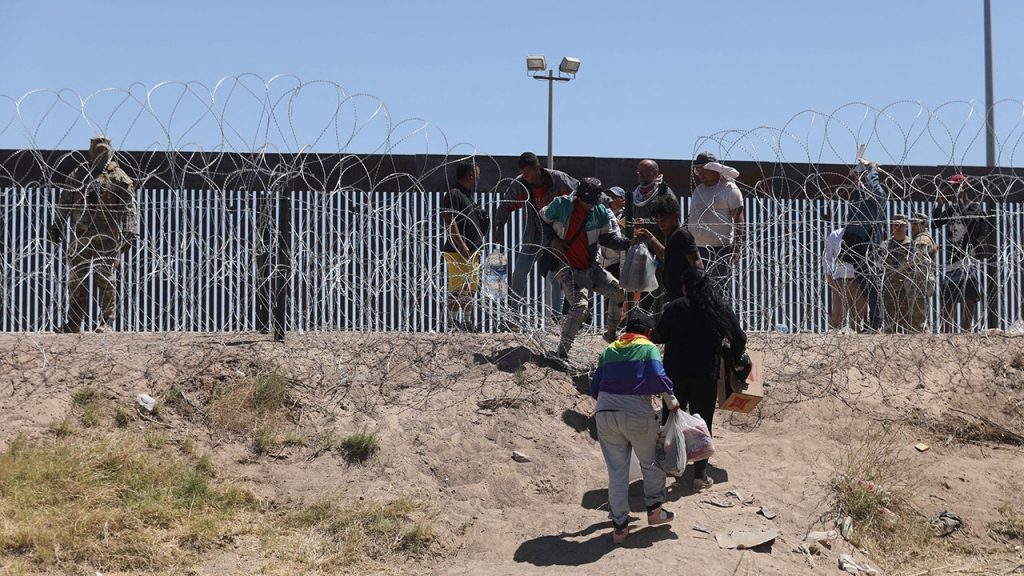In recent developments along the United States-Mexico border, the El Paso sector has emerged as the busiest area during February 2025, reflecting dramatic changes in migration patterns. According to the latest data from U.S. Customs and Border Protection (CBP), there were 2,110 encounters recorded in this sector, which is indicative of an overall decline in encounters at the southwest border, dropping to 8,347 in February, an astonishing 94.1% decrease from the previous year. This shift marks a significant milestone in border management and enforcement as it surpasses the previously busiest San Diego sector, which reported 1,650 encounters in the same period.
| Article Subheadings |
|---|
| 1) Overview of Encounters at the Border |
| 2) Comparison with Previous Years |
| 3) Factors Influencing the Changes |
| 4) Implications for Border Management |
| 5) A Look Ahead: Future Trends |
Overview of Encounters at the Border
The El Paso sector has recently claimed the title of busiest area at the U.S.-Mexico border. Stretching from Hudspeth County, Texas, to the New Mexico-Arizona state line, the sector saw 2,110 encounters in February 2025. U.S. Customs and Border Protection’s data shows that this figure represents a significant drop from prior years and is part of a broader trend of declining encounters nationwide. The overall number of encounters at the southwest border dropped to 8,347, compared to 124,215 during February of the previous year. This staggering decline indicates that migrant traffic across the border has significantly reduced.
Comparison with Previous Years
Historically, the El Paso sector has been a hotspot for migration, with encounters peaking significantly in previous years. For instance, in February 2024, the sector recorded an alarming 23,919 encounters, illustrating the severe challenges faced at the border. In contrast, the recent February 2025 numbers not only reflect a year-over-year decline but also show a decrease from the previous month, when El Paso recorded 4,870 encounters in January 2025. Similarly, other sectors like San Diego experienced a dramatic decrease with only 1,650 encounters in February 2025, down by roughly 94.8% from the previous year.
Factors Influencing the Changes
Several factors contribute to this dramatic shift in border encounters. One notable aspect is policy changes emphasizing stronger border enforcement under recent administrations. As officials continue to enact stricter immigration policies, the consequences have led to deterrence among would-be migrants. Additionally, changing geopolitical factors, such as economic conditions and political circumstances in nations like Mexico, also weigh heavily on migration trends. Many potential migrants may choose to remain in their home countries due to declining opportunities or increased danger in travel. The impact of these policies and conditions appears to be substantial and plays a critical role in decreasing migration numbers.
Implications for Border Management
The notable decrease in encounters, particularly in the El Paso sector, raises questions about border management strategies. As data shows fewer illegal crossings, officials must adapt their approaches to enforcement and resource allocation. With multiple sectors reporting under 200 encounters, the emphasis may shift toward utilizing resources for more efficient processing and support services. Enhanced border security measures may still be necessary, but this reduced flow offers a unique opportunity for border management officials to reassess strategies and redirect resources toward community support and processing facilities.
A Look Ahead: Future Trends
As data continues to roll in, observers are keenly watching how these trends will develop. Predicting future encounters will require analysis of various factors, including migration patterns, political climate, and evolving U.S. immigration policies. Experts advocate for a balanced approach to addressing security concerns while ensuring humane treatment for migrants. Continuous monitoring and assessment of migration numbers will be essential in determining current and future border security strategies as well as understanding the broader implications for U.S. immigration policy.
| No. | Key Points |
|---|---|
| 1 | El Paso sector now leads border encounters, registering 2,110 cases in February 2025. |
| 2 | Overall encounters on the southwest border dropped to 8,347, a 94.1% decrease from the prior year. |
| 3 | San Diego sector saw a decrease to 1,650 encounters in February 2025, down from much higher figures last year. |
| 4 | Changes in U.S. immigration policy have been cited as a key factor in the reduction of encounters. |
| 5 | Officials are being urged to reconsider resource allocation for improved border management and community support. |
Summary
The significant drop in encounters along the southwest border indicates a complex interplay of policy changes, geopolitical factors, and shifts in migration behavior. With El Paso now leading the way in border encounters while also experiencing significant reductions, it underscores an evolving landscape in U.S. border management. As officials re-evaluate strategies in light of this data, there remain substantial questions about the future direction of immigration policy and enforcement effectiveness. Understanding these patterns will not only benefit local border communities but will also shape the overarching approach toward migration in the United States.
Frequently Asked Questions
Question: What does it mean for the El Paso sector to be the busiest along the border?
Being the busiest sector indicates that El Paso is encountering the highest number of migrant crossings compared to other areas, which reflects both enforcement and policy implications in border management strategies.
Question: How has the overall number of encounters changed recently?
Overall encounters at the southwest border have dramatically decreased to 8,347 in February 2025, which is a 94.1% reduction from the previous year, showcasing a significant change in migration patterns.
Question: What factors are contributing to the decline in encounters at the border?
Factors include stricter U.S. immigration policies, changing economic conditions in migrants’ home countries, and enhanced enforcement measures that may deter individuals from attempting to cross the border.


